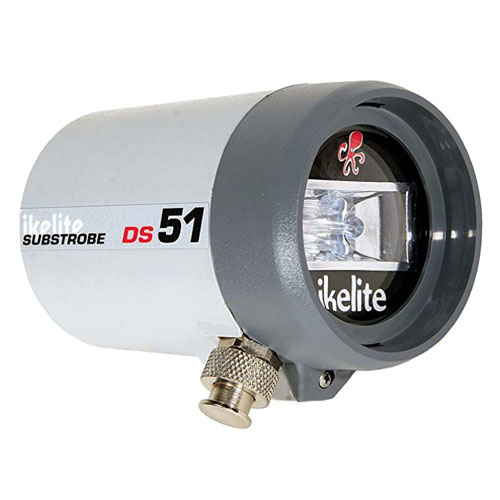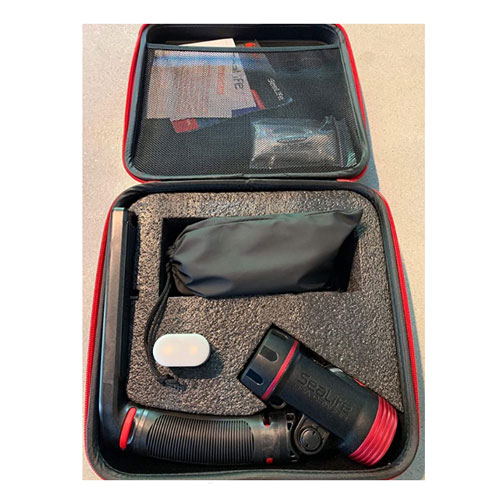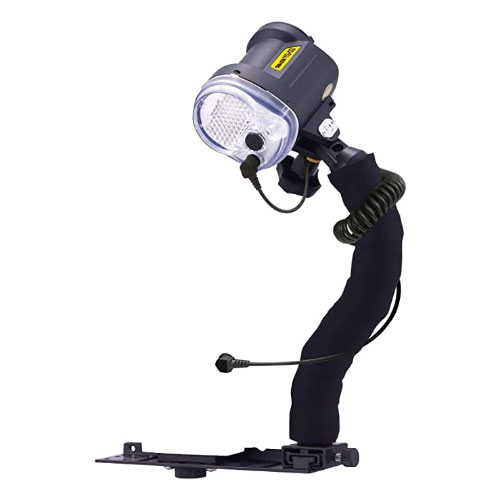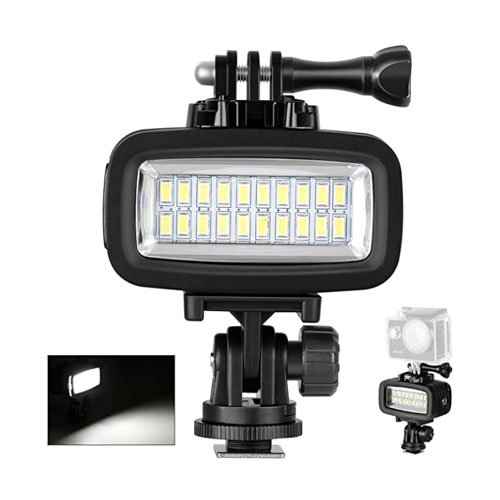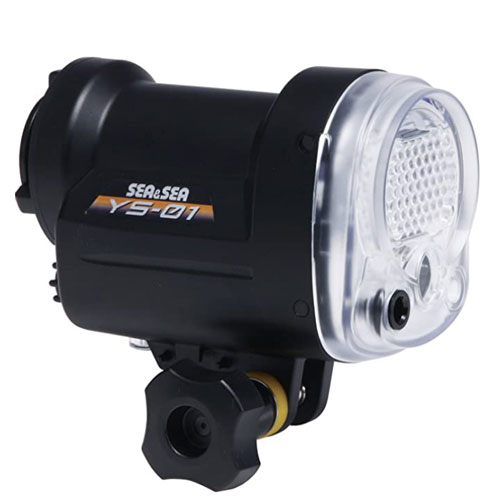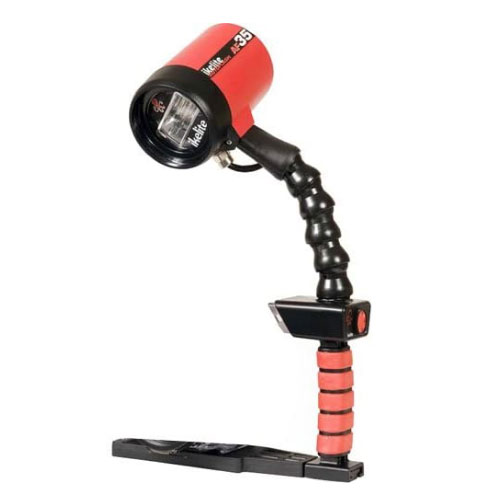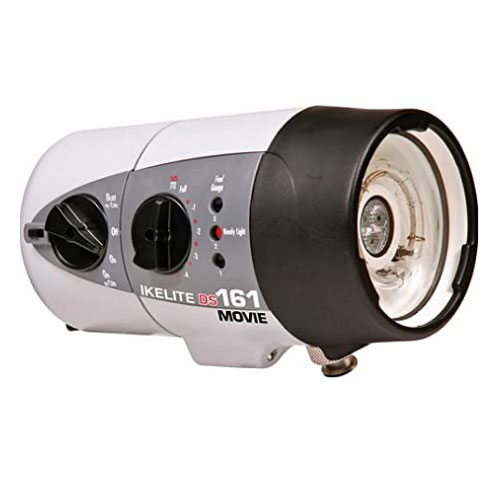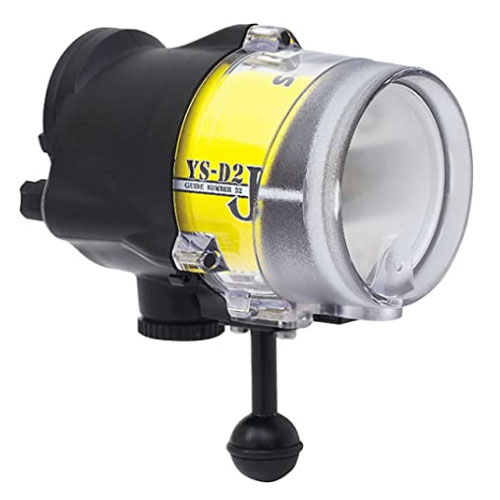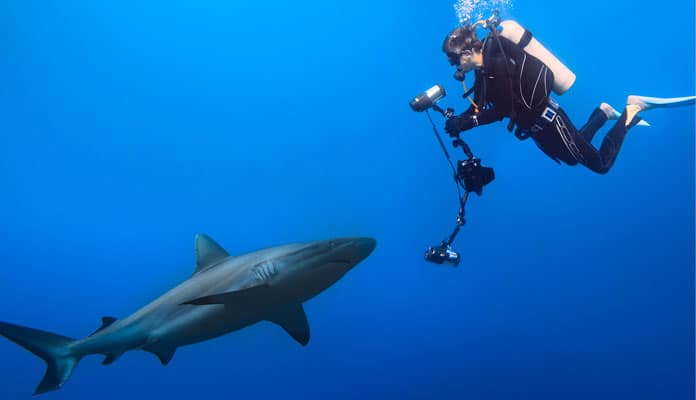
From the first time that you put your head underwater and go snorkeling, you’ll be amazed by all the beauty sitting below the surface and you will want to make those memories last forever. Taking underwater photography will help you to bring all the beauty of the sea to dry land, but you need a bit of gear to get the job done. As any diver will tell you, the light underwater isn’t always ideal, especially when diving through wrecks or going deep. That is why it is highly recommended to have with you the best underwater flash you can find to make sure all those beautiful views are captured perfectly.
We have compiled here a list of the best underwater strobes on the market to ensure you will get the perfect photo every time. They range from simpler and lighter models, designed for amateurs with less budget, to larger and more professional ones that are designed to give you the best results. Read on to discover what your options are as you get ready for your next underwater adventure.
OUR TOP PICK
Lumitec SeaBlazeX LED Light Underwater Camera Strobe
- Stand Out Features - Why We Love It
- 320 flashes on a full battery
- Small and portable package
- Lightweight
Battery: 4x AA
Weight: 1.3 pounds
Dimensions: 5 x 4 x 4 inches
Flash Power: 2000 lumens
EDITORS CHOICE
Ikelite 4035 AutoFlash AF35
- Stand Out Features - Why We Love It
- Light position reduces unwanted reflections and diffusion
- Colors are vivid and true to life
- Powerful flash
Battery: Lithium-ion
Weight: 1.7 pounds
Dimensions: 16 x 3 x 4 inches
Flash power: 2500 lumens
BEST VALUE
Sea & Sea YS-03 Strobe
- Stand Out Features - Why We Love It
- Comes with included diffuser
- Affordably priced
- Simple controls
Battery: 4xAA
Weight: 1 pound
Dimensions: 10 x 8 x 8 inches
Flash power: 2000 lumens
SeaLife Sea Dragon Strobe
- Stand Out Features - Why We Love It
- Light reproduces excellent colors
- Usable down to 200 feet
- Lasts 60 minutes on a full charge
Battery: Lithium-ion
Weight: 9.9 ounces
Dimensions: 8 x 3.94 x 1.97 inches
Flash power: 700 lumens
Sea & Sea YS-01 Strobe
- Stand Out Features - Why We Love It
- Two diffusers and a red filter included
- Very precise controls over output levels
- Quick and easy to attach to the camera housing
Battery: 4 x AA
Weight: 1.3 pounds
Dimensions: 6 x 5.5 x 4.5 inches
Flash power: 2000 lumens
Ikelite AF35 Strobe
- Stand Out Features - Why We Love It
- Large battery capacity
- 10 different brightness settings
- Affordable prices
Battery: Lithium-ion
Weight: 2.87 pounds
Dimensions: 12 x 12 x 14 inches
Flash power: 1000 lumens
Ikelite DS161 Strobe
- Stand Out Features - Why We Love It
- Usable for photos and videos
- 6 different manual power settings
- 200 flashes per charge
Battery: Lithium-ion
Weight: 1.5 pounds
Dimensions: 6.5 x 9.8 x 6.5 inches
Flash power: 2000 lumens
Sea & Sea YS-D2J Strobe
- Stand Out Features - Why We Love It
- 24 steps of brightness adjustment
- Compatible will the full range of Nikon cameras
- 1.6-second recharge rate
Battery: 4 x AA batteries
Weight: 1.2 pounds
Dimensions: 5 x 4 x 4 inches
Flash power: 1800 lumens
How To Choose The Best Underwater Strobe – Buying Guide
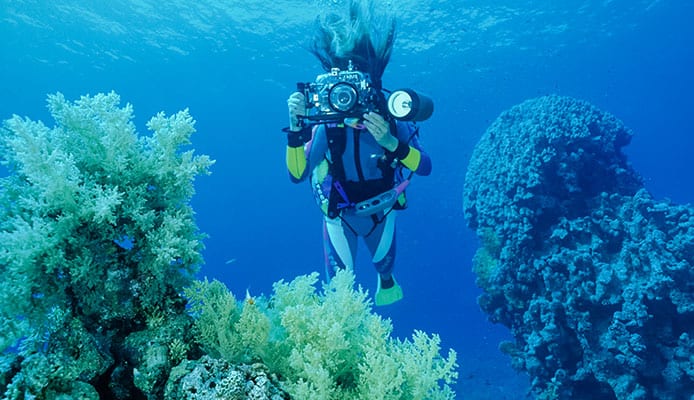
How it is powered
Most of the strobes on our list are powered by AA batteries, while some others use a rechargeable Lithium-ion one. For AA batteries, it is recommended that you invest in a NiMH version, since this is a high-quality power pack that comes in a rechargeable option. This will allow you to not have to keep forking out money to keep your light powered. The range of strobes per battery should be between 100 and 300 depending on the strength of the flash. Lithium-ion batteries don’t need to be replaced as often and take up much less space in the flash but are more expensive to buy
Look at the light
You do not want your photographs to look unnatural. Diffusers and filters will create a life-like look without washing out your subjects. Just install them on your flash and the colors will be soft and pleasing while capturing the environment as if you were looking at it. Filters, like a red light filter, can help you recapture some of the wavelengths of light that gets lost the deeper you find yourself under the surface. They can also be useful to not scare away the nightlife since some animals are sensitive to the harsh light emitted by these strobes. This can allow you to take more than one shot in one location without scaring away the subjects you are looking to photograph.
Recycle Rate
The recycling rate is the time it takes for the strobe to be ready to fire again. The power of the strobe will affect the refresh time since more powerful flashes take longer to recharge. Lower power strobes will allow you to keep snapping quicker while higher intensity flashes will slow you down. This range is typically between 1 and 3 seconds, so it is important to be aware of it when considering which subjects you want to photograph. For fast-moving fish, a less powerful strobe that recharges rapidly may well be a better option than a big and strong one. The latter may serve you better if you are swimming next to larger fish or whales that do not move so fast.
Triggering
Every strobe light needs some way to trigger it. There needs to be a way for the strobe light to communicate with the camera to ensure that the light is emitted at the correct time. There are two main triggers for strobes: electrical and optical. Both come with advantages and disadvantages.
Electric triggers require a hard-wired connection between the camera and your strobe. When the picture is taken, an electrical signal is sent from the camera to the strobe and the light is switched on. This method of triggering is very accurate, but there must be a way to connect the strobe and keep the connectors dry. Not all cameras have this.
With optical triggering, there is usually often a fiber optic feed that takes in the signal to trigger the light. This method can drain more of the battery by using the camera flash, but the method is simpler and less hassle than an electric trigger. You do need to have a dedicated port on your camera housing, so be sure to check for it when you are shopping for gear.
Target / Focus Light
The target (or focus) light is a light that is switched on before the strobe comes on. It is a small LED light that shines on the target area of the strobe. The light helps you to see where the strobe light is shining so that you can line up the shot before you take it and have an idea of what it is going to look like. When you take a picture, the target light will go off before the store light comes on. This helps you to capture the perfect shot. The target light can also be used as a diving light when you are navigating to the area you want to shoot.
Power
The more power you have, the better. Having more power means that you have more options and versatility when controlling your strobe. Power is measured in lumens, and lets you know the intensity that your flash can put out. This will also influence how far your subjects can be from the light source and still be illuminated and thus appear in your shot. If you can afford it and have the space to bring it along with you underwater, then we would recommend buying the most powerful flash you can find. Be advised, though, that this will mean investing a bit more also on batteries since a larger and beefier flash will drain them much faster than a smaller, less powerful one.
Angle of Coverage
The angle of coverage tells you how wide the cone of light that your flash emits is. For wide-angle shots, you will need a wider range of coverage with your strobe. For taking regular underwater shots, an angle of 90 degrees will be fine in a strobe. For wider shots, you will want to look for an angle between 90-100 degrees. Most underwater strobes should be able to accommodate for that without issues, but if you plan to put on a wet lens and take a fisheye shot you need to look for a strobe that covers at least 180 degrees with its flashes.
Battery Life
Some batteries will be powerful, but they may not last very long. You want your battery to last for as long as possible, and that is always something you should keep in mind when you are looking for a battery. You should also look at the efficiency of the battery, meaning how many shots you can get with one charge. A higher capacity battery will usually last longer than a lower capacity one, but you should also be looking at the charging time and how many times the battery can be charged without a significant decrease in power.
Size and Weight
When you are looking for your strobe, you want a flash that will light the underwater areas you are going to shoot. You should never compromise on this, but once you have found the strobes you need, you should try and find one within that which is light and small. The lighter and smaller, the better. When you are diving, you will have a lot of equipment with you. The less weight you can add to that, the better.
You might also like: Perfect Dive Lights
Color temp
The color temperature of your strobe light is measured in Kelvin. When you buy a flashbulb or a light bulb, you will often find that they come with a number associated. Underwater strobes fall in a range between 4300-5600 Kelvin. Most will fall between 5400-5500K, which is the range of sunlight. Halogen bulbs, on the other hand, have a more yellowish hue and a light temperature of around 3200K.
Bulb size
Once you have a strobe, you can begin to think about buying specialist bulbs for it. Regular bulbs will not set you back a lot of money, but you can spend a little more to get a build that will give you an effect that you cannot get from a regular bulb. Tubular or curved bulbs can give you a better quality of light and some extra power, but they will cost you more money. We recommend gaining a lot of experience with regular bulbs before you venture out and buy more specialist bulbs.
FAQs
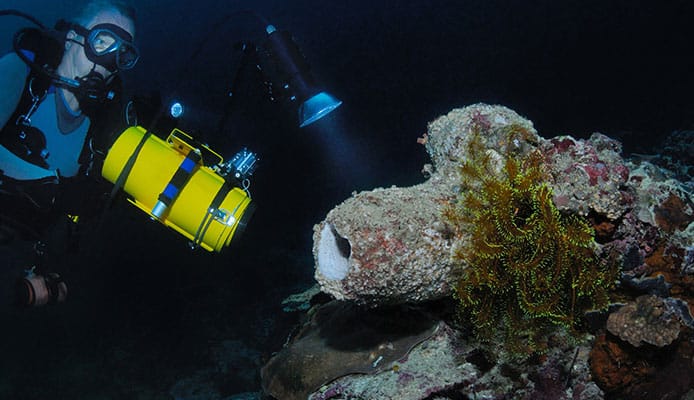
Q: Why Strobes Are Necessary For Underwater Photography?
The internal flash of an underwater camera is fine, but it will not give you the light you need. Photography is all about light, and the ambient light in the water combined with the flash in your camera will give you a shot, but will not light your shot as well as a strobe will. Also, light levels tend to be very low under the surface, so you will need all the help you can get.
With the integrated flash from an underwater camera, you can get some backscatter in the shot. This shows up as little specks of light on the picture and can ruin your shot. This is caused by the lens and the flash being too close together. A good strobe usually comes with an arm that holds it far away from the camera, so this effect can be greatly reduced.
When you take a picture with the ambient light in the water, you will find that the shot looks very blue or green. This is due to the way light acts under the water. You may get an image that is very close to what your eye is seeing under the water, but it can be hard to get a really good photo with only ambient light (of course, you can get some amazing shots with just ambient light). The deeper you go (and always remember your scuba gauge), the less light you are going to have available. A strobe will give you a fresh and natural source of light no matter how deep you go in the water.
Q: How Do Underwater Strobes Work?
When you are shooting pictures underwater, a strobe will be set off when you take that picture. A strobe is an independent piece of equipment and is triggered by your camera either by an electronic connection or by the camera’s internal flash. When the strobe is triggered, the flashbulb is lit up for a specific duration of time and will light up anything that is in front of it. The more power there is, the longer the flash is lit. Once the flash is lit, the strobe is recycled. This means that the battery transfers a charge to a capacitor, and it is this capacitor that feeds the flash. The underwater flash works in the same way as a regular camera strobe would work.
Q: What Is Better Strobe or Flash?
The answer is strobe. The answer is also flash. They are both the same thing. Both terms refer to an electric unit that emits a pulse of light in a short period. The word strobe is often used as it sounds fancier, but both words are completely interchangeable.
Q: Is There A Limit On the Depth Where I Can Use My Strobe?
A lot of high-end strobes will work to a depth of 200 feet, but it is possible to go deeper. Of course, the deeper you go, the more pressure there is going to be. More pressure means that you need a strobe that can stand up to that pressure, and that means better materials and construction. You can get a strobe which can be taken into very deep waters, but you will have to pay a lot of money for it.
Globo Surf Overview
When looking for the best underwater strobes for your camera, we recommend paying close attention to the underwater camera flash reviews. Listening to how other divers liked the flash will also help you choose the best product for your needs. Underwater photography makes for exceptionally beautiful and unique photos. From shipwrecks to an encounter with a whale, being able to document your findings will allow you to enjoy the many memories for years to come. Getting the best diving strobes for photography will ensure that you are never left with photos that are too dark, even during night dives.
Exploring the underwater world is a thrill. You get to see something new each time you are under the water, and there is something magical about capturing the life and landscape down there. The best underwater camera will help you to capture those images, but without a good strobe, your pictures will not be professionally lit. It is almost more important to have a great strobe than it is to have a great camera.
Getting the best diving strobes for photography will ensure that you are never left with photos that are too dark. Our buying guide has all the information you need, and our list has the perfect underwater strobes for you. All you have to do is find it.



